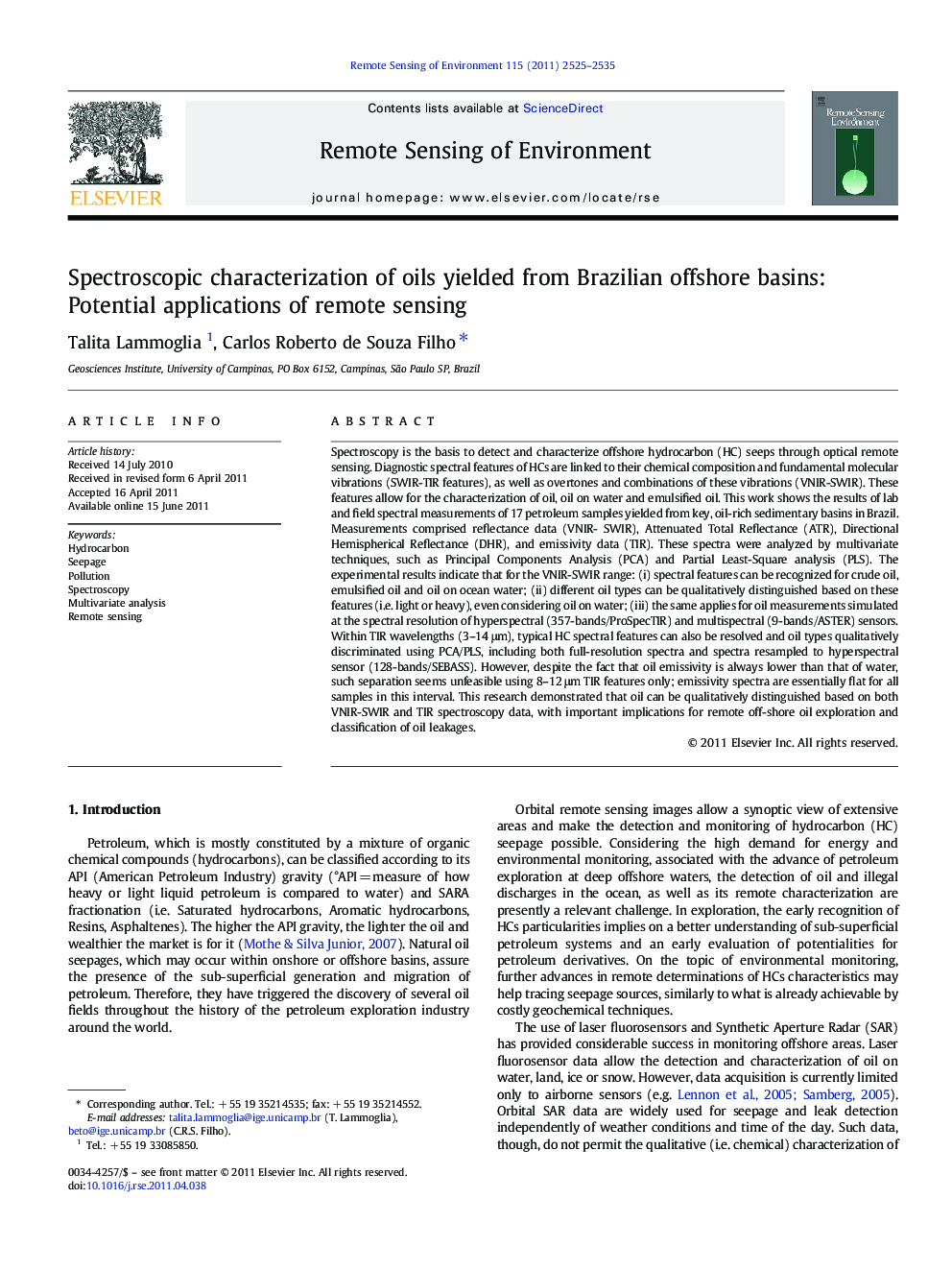| کد مقاله | کد نشریه | سال انتشار | مقاله انگلیسی | نسخه تمام متن |
|---|---|---|---|---|
| 4459301 | 1621287 | 2011 | 11 صفحه PDF | دانلود رایگان |

Spectroscopy is the basis to detect and characterize offshore hydrocarbon (HC) seeps through optical remote sensing. Diagnostic spectral features of HCs are linked to their chemical composition and fundamental molecular vibrations (SWIR-TIR features), as well as overtones and combinations of these vibrations (VNIR-SWIR). These features allow for the characterization of oil, oil on water and emulsified oil. This work shows the results of lab and field spectral measurements of 17 petroleum samples yielded from key, oil-rich sedimentary basins in Brazil. Measurements comprised reflectance data (VNIR- SWIR), Attenuated Total Reflectance (ATR), Directional Hemispherical Reflectance (DHR), and emissivity data (TIR). These spectra were analyzed by multivariate techniques, such as Principal Components Analysis (PCA) and Partial Least-Square analysis (PLS). The experimental results indicate that for the VNIR-SWIR range: (i) spectral features can be recognized for crude oil, emulsified oil and oil on ocean water; (ii) different oil types can be qualitatively distinguished based on these features (i.e. light or heavy), even considering oil on water; (iii) the same applies for oil measurements simulated at the spectral resolution of hyperspectral (357-bands/ProSpecTIR) and multispectral (9-bands/ASTER) sensors. Within TIR wavelengths (3–14 μm), typical HC spectral features can also be resolved and oil types qualitatively discriminated using PCA/PLS, including both full-resolution spectra and spectra resampled to hyperspectral sensor (128-bands/SEBASS). However, despite the fact that oil emissivity is always lower than that of water, such separation seems unfeasible using 8–12 μm TIR features only; emissivity spectra are essentially flat for all samples in this interval. This research demonstrated that oil can be qualitatively distinguished based on both VNIR-SWIR and TIR spectroscopy data, with important implications for remote off-shore oil exploration and classification of oil leakages.
► We determine the spectral signature of crude oils, oil films and emulsified oils.
► Hydrocarbons are qualified (e.g., API gravity) by their VNIR-SWIR-TIR lab spectra.
► Qualification was also possible considering hyperspectral and multispectral sensors.
► Key implications for offshore oil exploration and classification of oil leakages.
► Spectral library is a new reference for remote sensing applied to petroleum studies.
Journal: Remote Sensing of Environment - Volume 115, Issue 10, 17 October 2011, Pages 2525–2535